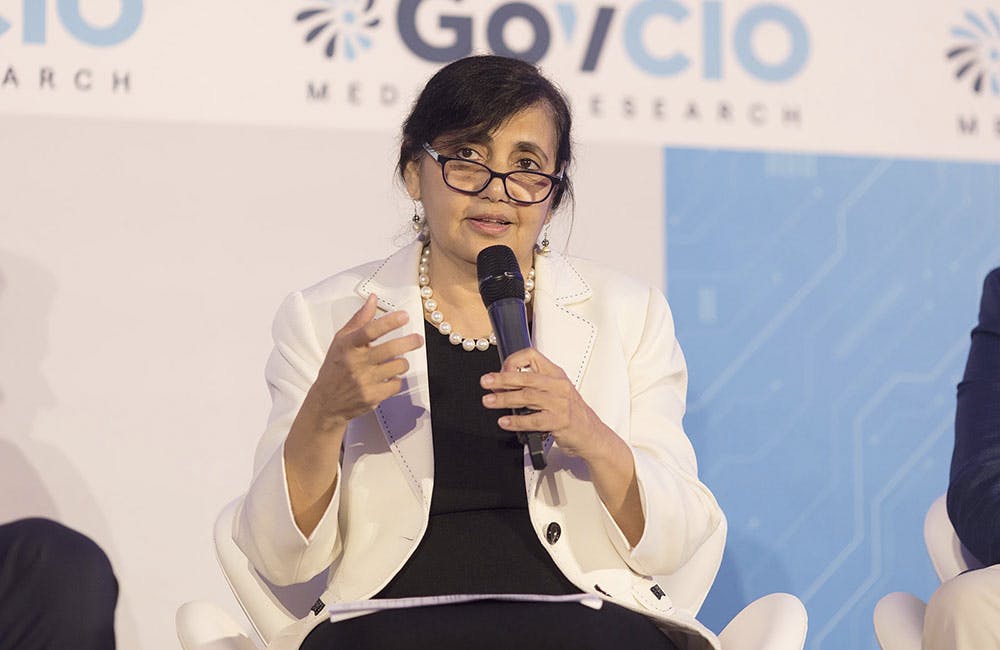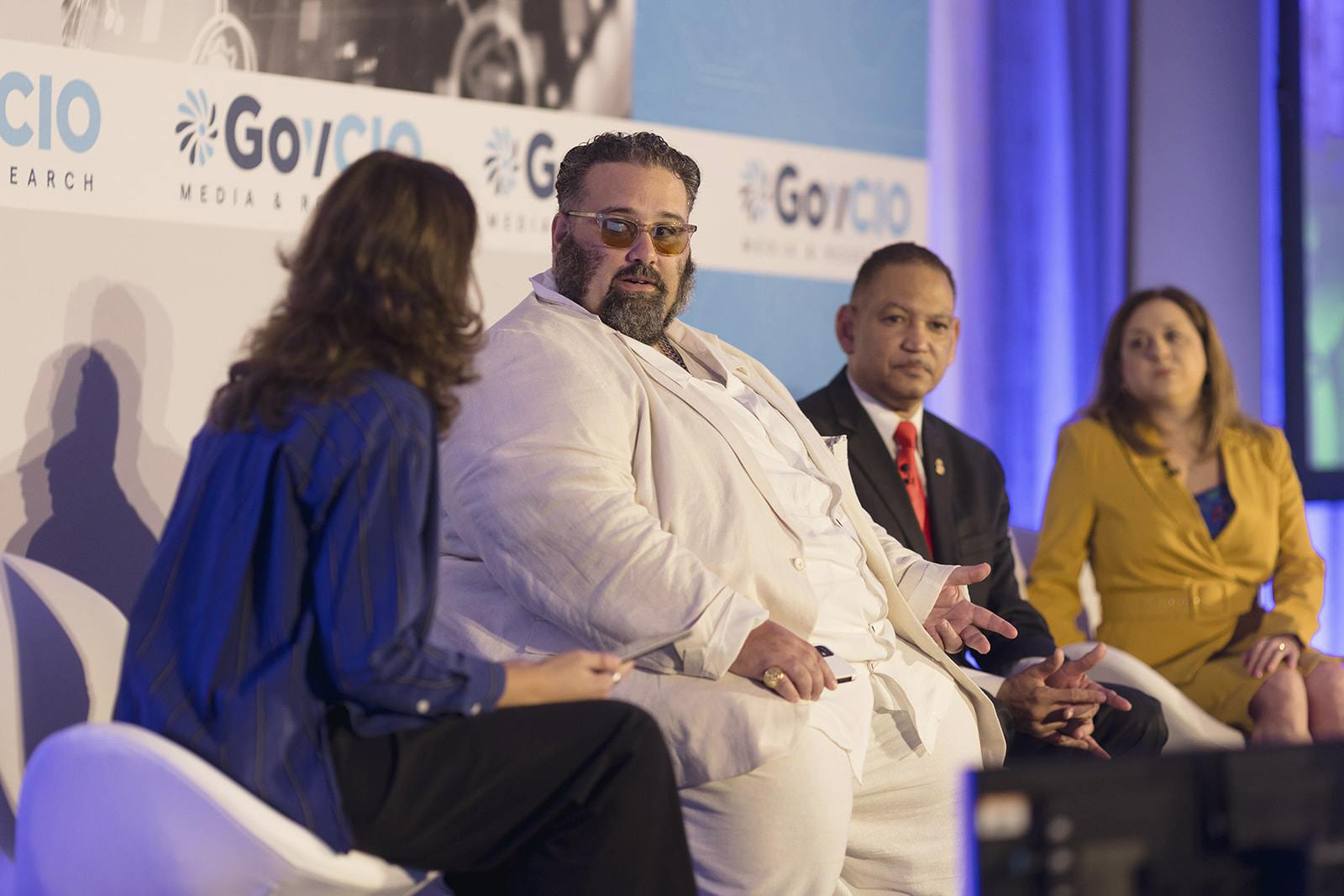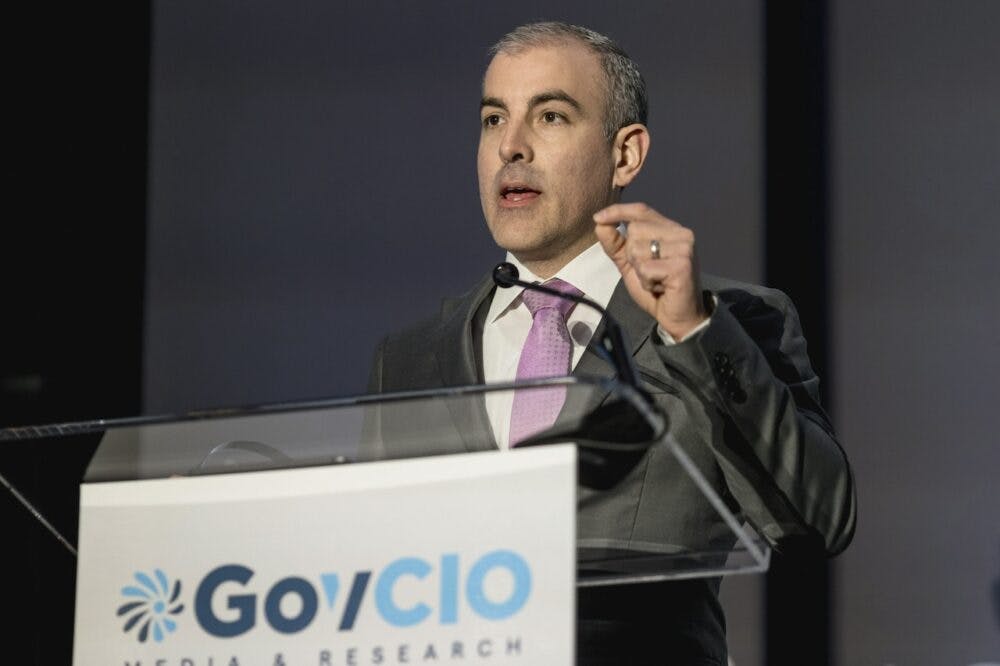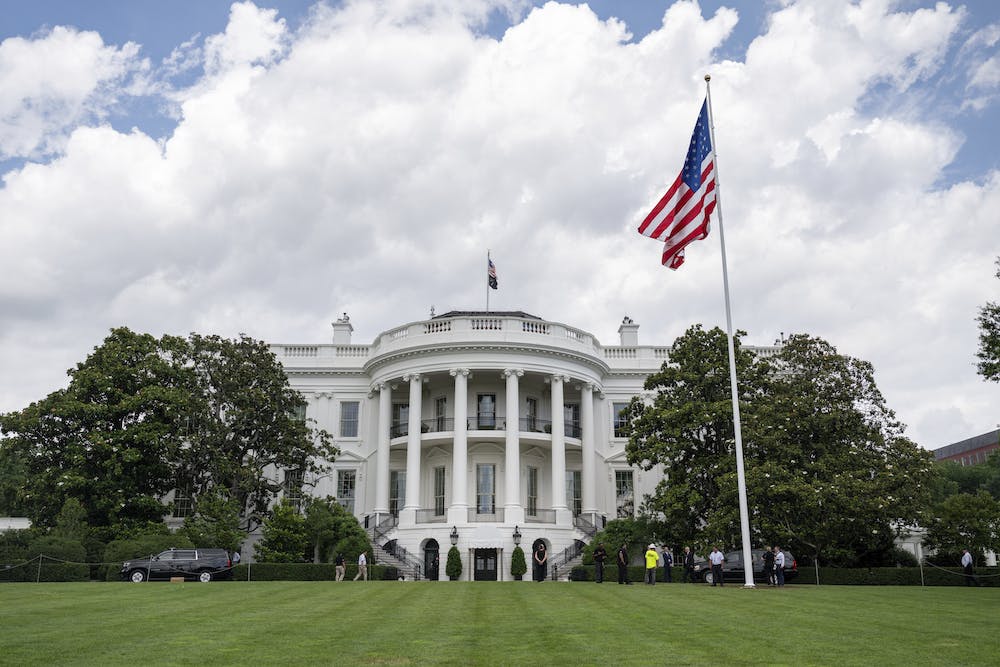DOL’s AI Chief Outlines Intersection of Tech and AI
DOL CAIO Mangala Kuppa is driving innovation, collaboration and ethical AI integration to enhance operational efficiency.

Artificial intelligence development is showing promise for the Department of Labor to improve efficiency and streamline workflows. Its new Chief AI Officer Mangala Kuppa is thinking through efforts to integrate AI responsibly while fostering collaboration, innovation and transparency.
In a Q&A with GovCIO Media & Research, she shared insights into her role, the agency’s new AI strategy and how the agency is leveraging it to create a worker-centric, future-ready environment.
What brought you into the role at Labor overseeing AI?
Kuppa: My journey to becoming the chief AI officer at the department felt like a natural progression. For more than two decades, I’ve held leadership positions in both the public and private sectors, and now I also serve as Labor’s CTO. My responsibilities include overseeing enterprise architecture, emerging technologies, our enterprise data warehouse solutions and records management. All these areas are integral to AI initiatives.
My academic background also played a significant role in this journey. During my postgraduate studies, I focused on AI and image processing while not realizing at the time how pivotal those technologies would become. I previously was the director of business application services, managing mission systems for 27 DOL agencies. This experience gave me a deep understanding of the challenges and opportunities in technology, which helps me lead AI strategy and implementation at DOL effectively.
Labor’s CAIO role includes defining our AI strategy, engaging stakeholders across different levels and ensuring we implement AI responsibly. It’s a role that requires balancing technological innovation with our mission to serve workers effectively.
What are the biggest priorities for a CAIO?
Kuppa: The responsibilities of a CAIO can vary depending on the agency. At DOL, the role is closely intertwined with my duties as CTO. Together, these positions allow me to oversee the integration of AI across our department while maintaining a strong foundation in technology and governance.
At DOL, we’ve broken AI responsibilities into nine workstreams, each critical for implementing AI responsibly and effectively. These workstreams cover everything from strategy development and compliance to engaging stakeholders and identifying use cases. My job is to ensure we make progress in all these areas.
The role also includes creating an AI strategy and framework that align with our department’s goals. Collaboration is key, so I spend significant time working with internal teams, agency partners, external stakeholders and unions. I see the CAIO as a glue that binds these efforts, ensuring that we approach AI implementation responsibly and with a clear, worker-focused vision.
How is Labor using AI?
Kuppa: We’re leveraging AI to enhance workflows, improve efficiency and ultimately better serve the public. Some of our key use cases include:
- Generative AI tools: We’ve made secure generative AI available to staff, allowing them to summarize documents, draft memos and write emails more efficiently.
- Natural language processing (NLP): We’re using this to convert text to voice for training programs and voice to text for recording interviews, which reduces manual work and improves data accuracy.
- Custom modeling and fine-tuning: By fine-tuning generative AI models with our data, we’re creating applications like auto-coding, which speeds up development processes and enhances productivity.
- Augmented and mixed reality: We’re exploring augmented reality training environments to prepare inspectors for hazardous worksites, improving safety and readiness.
- AI in software development: We’re equipping developers with AI tools to streamline coding, reducing time-to-market for new applications and improving overall project delivery.
These use cases highlight the potential of AI to not only make our work more efficient, but also improve how we serve workers and the public.
How is you addressing skepticism and fear about AI?
Kuppa: Communication is key. We’re making a concerted effort to educate and engage our workforce through AI literacy programs. Our acting secretary has set a clear, worker-centered vision for AI, emphasizing that its purpose is to enrich jobs, not replace them.
We hold regular training sessions, open forums and discussions to ensure employees feel confident in their understanding of AI. Our goal is for every staff member to have a clear grasp of what AI is, how it can be applied in their roles and the risks involved. When people understand AI from their own perspective, it becomes less intimidating and more of a tool to support their work.
How does DOL partner to advance AI across government?
Kuppa: Collaboration is essential, especially with a technology that’s evolving as quickly as AI. Within the federal government, I’m part of the CIO Council, chaired by the White House Office of Management and Budget (OMB) and the Office of Science and Technology Policy (OSTP). We meet regularly, share ideas and discuss challenges and solutions.
Beyond government, we engage with private-sector vendors, academic institutions and industry experts to stay informed about the latest advancements. We also share what we’ve learned. For instance, use cases are shared on AI.gov. This constant exchange of knowledge ensures we’re not reinventing the wheel and can build on each other’s progress.
How has your agency built a foundation for AI governance?
Kuppa: Governance and collaboration are cornerstones of our AI strategy. At DOL, we’ve established an AI Governance Board, which includes union partners — an invaluable addition to our decision-making process.
We also host monthly forums with all 27 DOL agencies to share updates, ideas and challenges. Additionally, we’ve created a community of interest for all staff to participate in training sessions and discussions about AI. These forums ensure that everyone, from leadership to frontline workers, is part of the conversation about how AI impacts their work.
Centralized governance is critical to ensure we use AI responsibly. This includes identifying and mitigating risks, maintaining transparency, and embedding AI into our overall strategic framework.
What excites you about the future of AI?
Kuppa: I’m an optimist by nature and a technologist at heart, so I’m excited about AI’s potential to transform how we work and serve the public. I look forward to seeing AI tackle challenges we once thought insurmountable.
That said, I’m also aware of the risks. AI is a powerful tool, and if not governed responsibly, it can lead to unintended consequences. My primary focus is ensuring we’re intentional about using AI for good, aligning its capabilities with our mission to protect and empower workers.
I believe humanity will find a balance. With thoughtful collaboration and governance, we can create a future where AI is not just a tool, but also a force for meaningful progress.
This is a carousel with manually rotating slides. Use Next and Previous buttons to navigate or jump to a slide with the slide dots
-

Generative AI Demands Federal Workforce Readiness, Officials Say
NASA and DOI outline new generative AI use cases and stress that successful AI adoption depends on strong change management.
6m read -

The Next AI Wave Requires Stronger Cyber Defenses, Data Management
IT officials warn of new vulnerabilities posed by AI as agencies continue to leverage the tech to boost operational efficiency.
5m read -

Federal CIOs Push for ROI-Focused Modernization to Advance Mission Goals
CIOs focus on return on investment, data governance and application modernization to drive mission outcomes as agencies adopt new tech tools.
4m read -

Fed Efficiency Drive Includes Code-Sharing Law, Metahumans
By reusing existing code instead of rewriting it, agencies could dramatically cut costs under the soon-to-be-enacted SHARE IT Act.
5m read -

AI Foundations Driving Government Efficiency
Federal agencies are modernizing systems, managing risk and building trust to scale responsible AI and drive government efficiency.
40m watch -

Navy Memo Maps Tech Priorities for the Future Fight
Acting CTO’s memo outlines critical investment areas, from AI and quantum to cyber and space, as part of an accelerated modernization push.
5m read -

DOD Can No Longer Assume Superiority in Digital Warfare, Officials Warn
The DOD must make concerted efforts to address cyber vulnerabilities to maintain the tactical edge, military leaders said at HammerCon 2025.
4m read -

New NSF Program Cultivates the Future of NextG Networks
The agency’s new VINES program looks to tackle key challenges like energy efficiency and future-proofing wireless tech.
21m watch -

Tracking CIOs in Trump's Second Term
Stay informed on the latest shifts in federal technology leadership as new CIOs are appointed and President Trump's second term takes shape.
6m read -

DHA CDAO Spearheads Master Data Catalog to Boost Transparency
Jesus Caban plans to boost DHA's data maturity through a new master data catalog, governance frameworks and inventory of tech tools.
5m read -

Trump Orders Spark Government-Wide Acquisition Overhaul
As Trump pushes for a faster, simpler procurement system, agencies are leveraging AI and adapting strategies to meet new requirements.
5m read -

Inside Oak Ridge National Lab’s Pioneer Approach to AI
Energy Department’s Oak Ridge National Lab transforms AI vulnerabilities into strategic opportunities for national defense.
22m listen
















